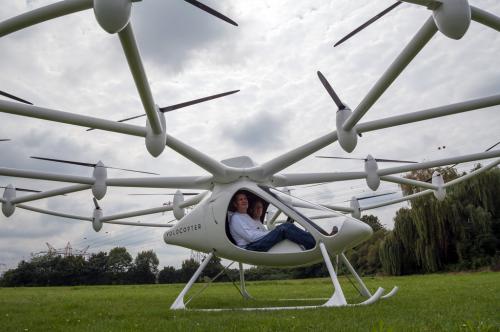Technological innovators e-volo sent out their prototype of the Volocopter, a two-seater “helicopter” with 18 electrically driven rotors, on its maiden flight over Karlsruhe, Germany, earlier this month. The team used a VC200 prototype, which has been in the works since last year, for which e-volo was also the 2012 recipient for the Lindbergh Prize for Innovation.
The first flights of the VC200 occurred in early November, where the team noted (through attaching equipment like HD video cameras to the craft’s rotor exterior) that their aircraft had a lower noise level and no noticeable vibrations during flight, as well as efficient spring strut landing gear, all characteristics that set the craft apart from traditional helicopter models. The prototype was developed by e-volo as a way to advance helicopters past noisy, vibration-heavy models, and is billed as “the world’s first green helicopter,” as it is emission-free.
The prototype’s lack of vibrations is particularly noteworthy, as noticeable vibrations combined with very high noise levels have led to passenger discomfort as well as technological issues aboard traditional helicopters. E-volo executive Stephan Wolf claims that their VC200 solves such issues admirably.

Prototype Volocoper with two passengers
Similar to a conventional helicopter, the Volocopter is a vertical take-off and landing manned aircraft, with its most unique and impressive feature being the 18 rotors that propel it, as opposed to the more traditional and clunky single combustion engine. The rotors are relatively simple in construction and do not require complex mechanics to assemble or operate, and enable the Volocopter to safely land even if some drives fail.
The prototype’s maiden flight documented that the VC200 has a minimum cruising speed of 54 kn, or 100 km/h, as well as a flight altitude of up to 65000 ft. The prototype also has a maximum take-off weight of 40 kg, and can complete more than one hour of flight time, with a present battery flight time of 20minutes and plans in place to extend that time to an hour or more.
There is still no word on when the design will reach the commercial market, but watching it develop is fascinating enough for now. Hopefully soon, however, it will be available for purchase.
Source Phys.org
Advertisement





